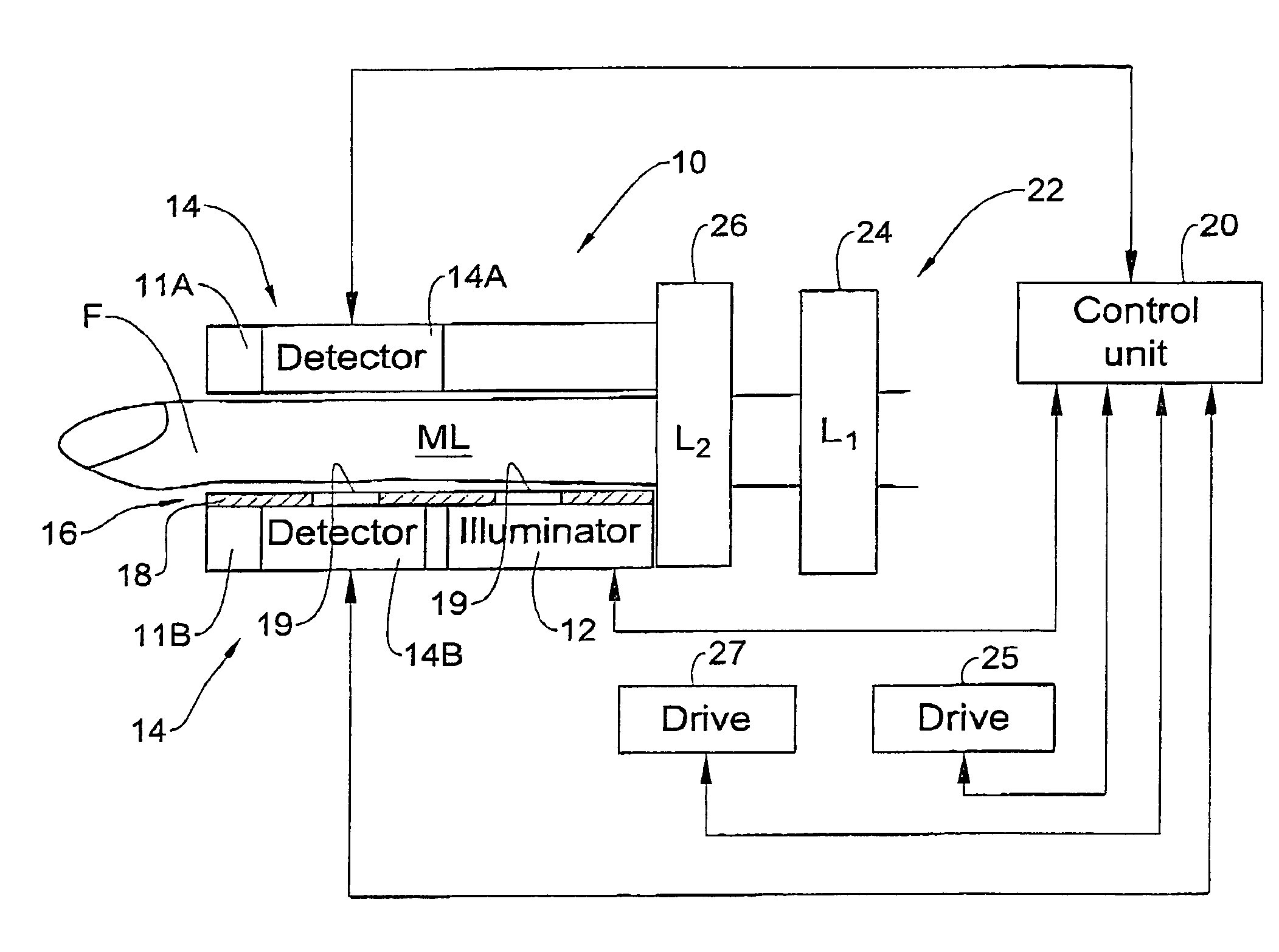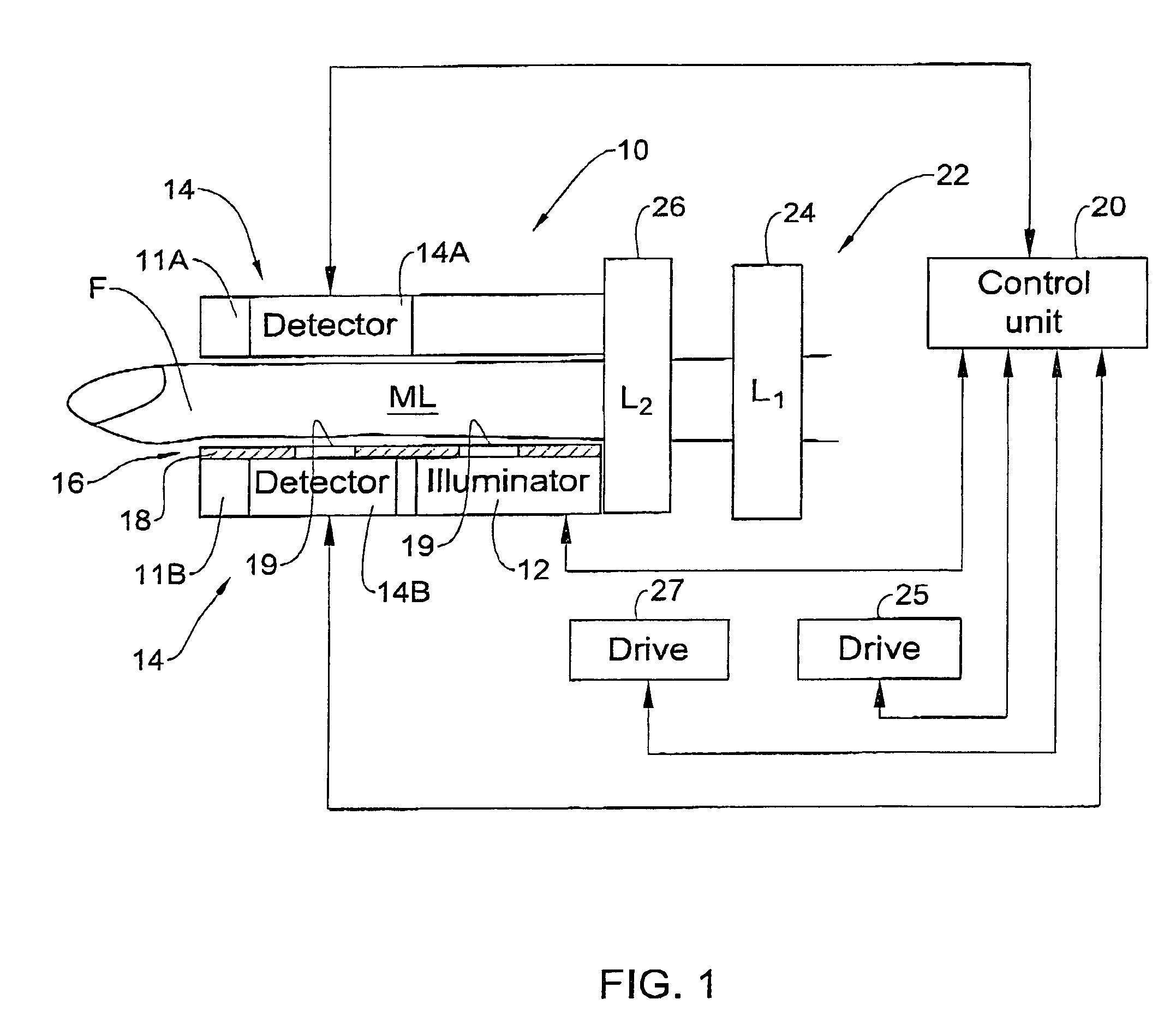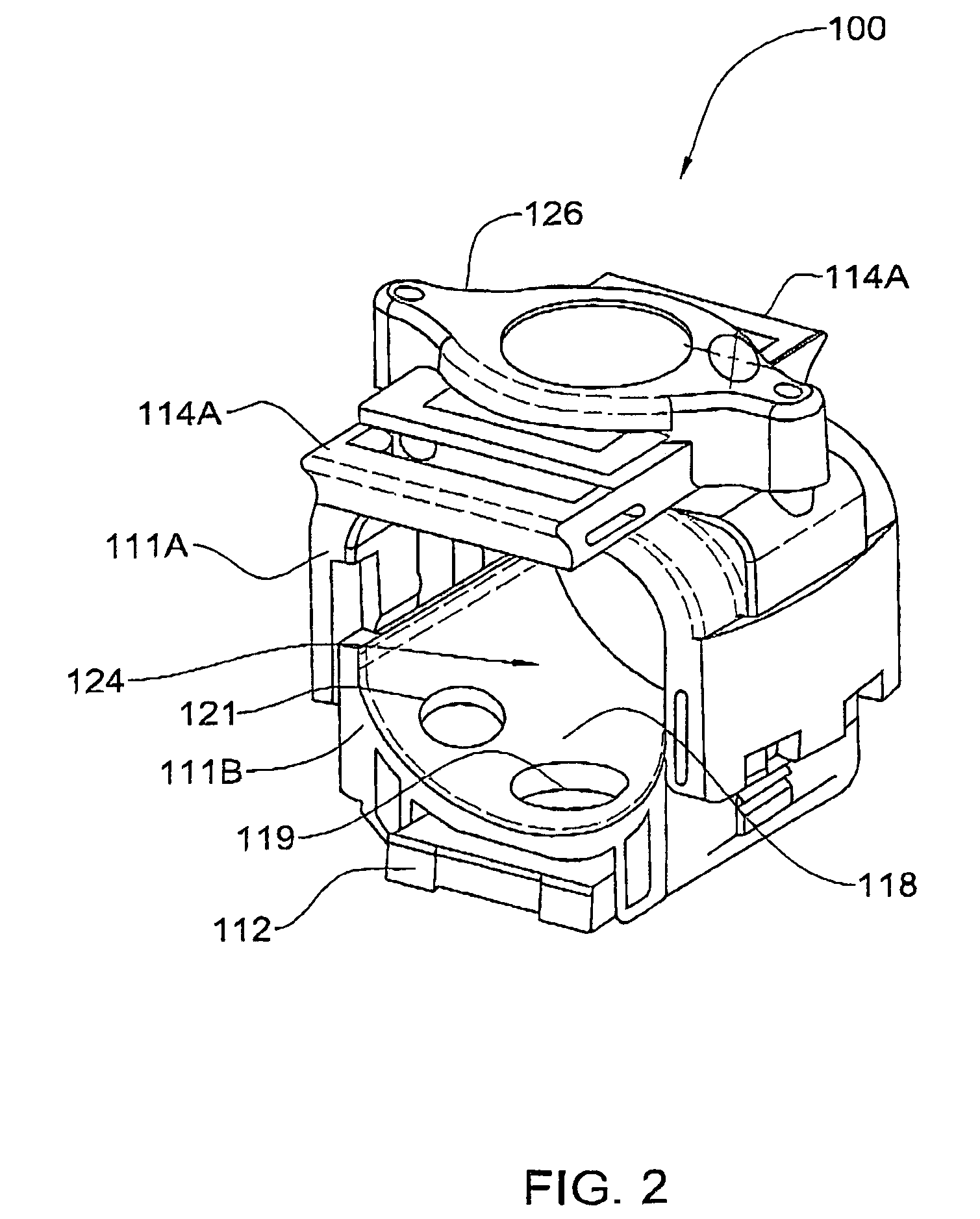Device and method for non-invasive optical measurements
a non-invasive, optical measurement technology, applied in the direction of medical science, sensors, diagnostics using pressure, etc., can solve the problems of large variability of individual parameters affecting the signal of concrete patients, the way of expanding non-invasive techniques, and significant difficulties, so as to maximize the homogeneity of the first and increase the amount of light
- Summary
- Abstract
- Description
- Claims
- Application Information
AI Technical Summary
Benefits of technology
Problems solved by technology
Method used
Image
Examples
Embodiment Construction
[0027]Referring to FIG. 1, there is schematically illustrated an optical measurement device 10 of the present invention for use in non-invasive measurements on a patient's body, e.g., patient's finger F. The device 10 includes an illumination assembly 12; a detection assembly 14; and a light directing assembly 16. A control unit 20 is provided for operating the illumination and detection assemblies and for receiving and processing measured data coming from the detection assembly.
[0028]The illumination assembly 12 is accommodated so as to direct illuminating light towards the finger F. The illumination assembly 12 may utilize one or more light emitting elements, e.g., LED(s). Preferably, a matrix of LEDs is used. In this specific example of measuring blood parameters, the illumination assembly 12 is designed for generating light of different wavelengths (at least two different wavelengths), which can be implemented by using different light emitting elements or a single broadband illu...
PUM
 Login to View More
Login to View More Abstract
Description
Claims
Application Information
 Login to View More
Login to View More - R&D
- Intellectual Property
- Life Sciences
- Materials
- Tech Scout
- Unparalleled Data Quality
- Higher Quality Content
- 60% Fewer Hallucinations
Browse by: Latest US Patents, China's latest patents, Technical Efficacy Thesaurus, Application Domain, Technology Topic, Popular Technical Reports.
© 2025 PatSnap. All rights reserved.Legal|Privacy policy|Modern Slavery Act Transparency Statement|Sitemap|About US| Contact US: help@patsnap.com



